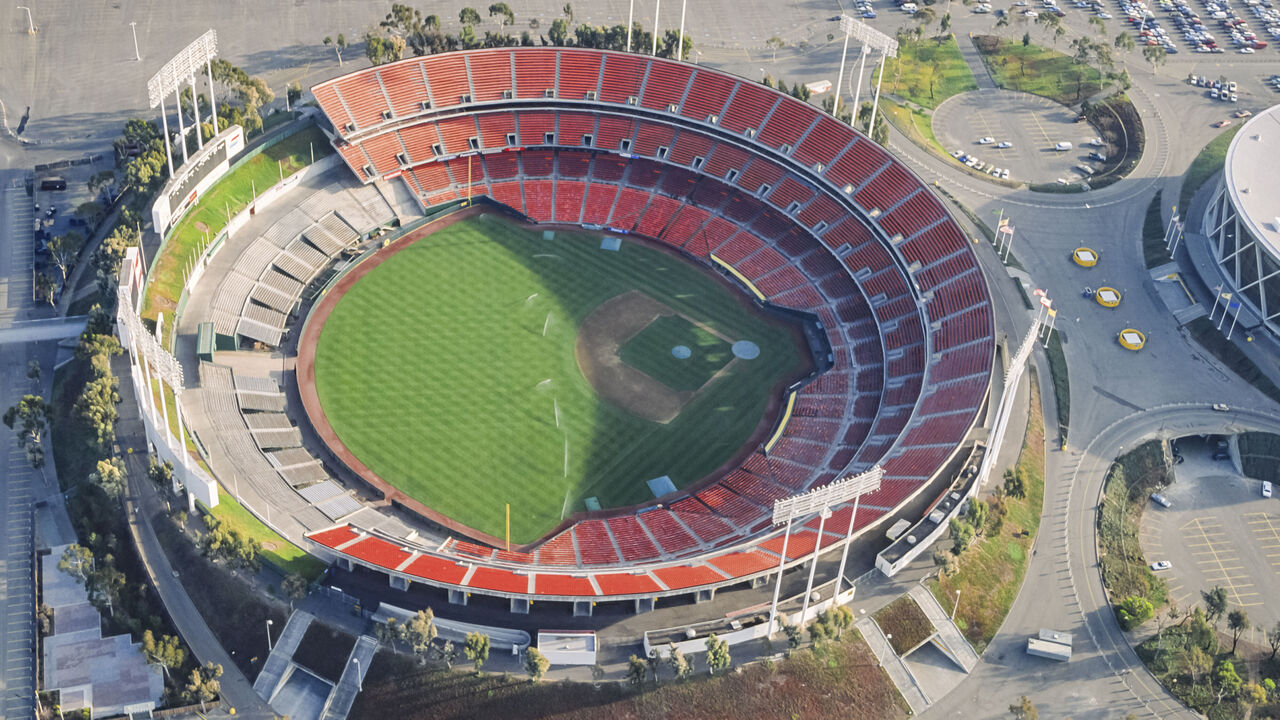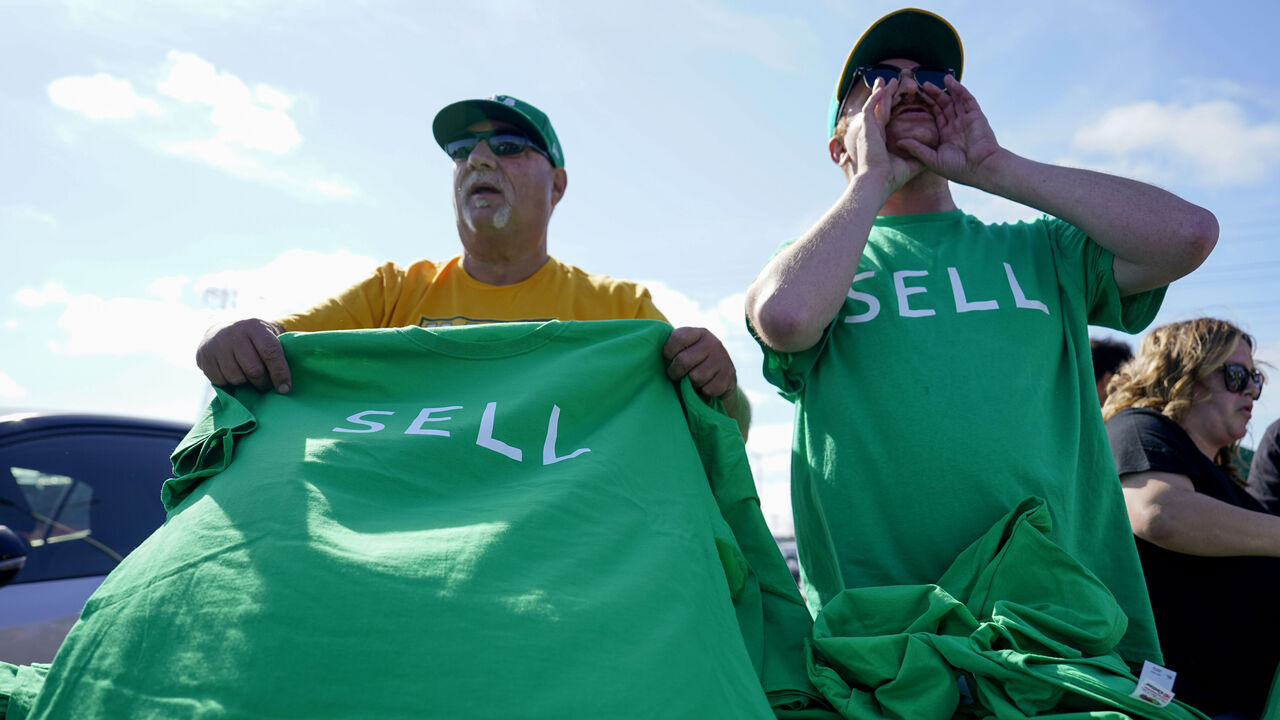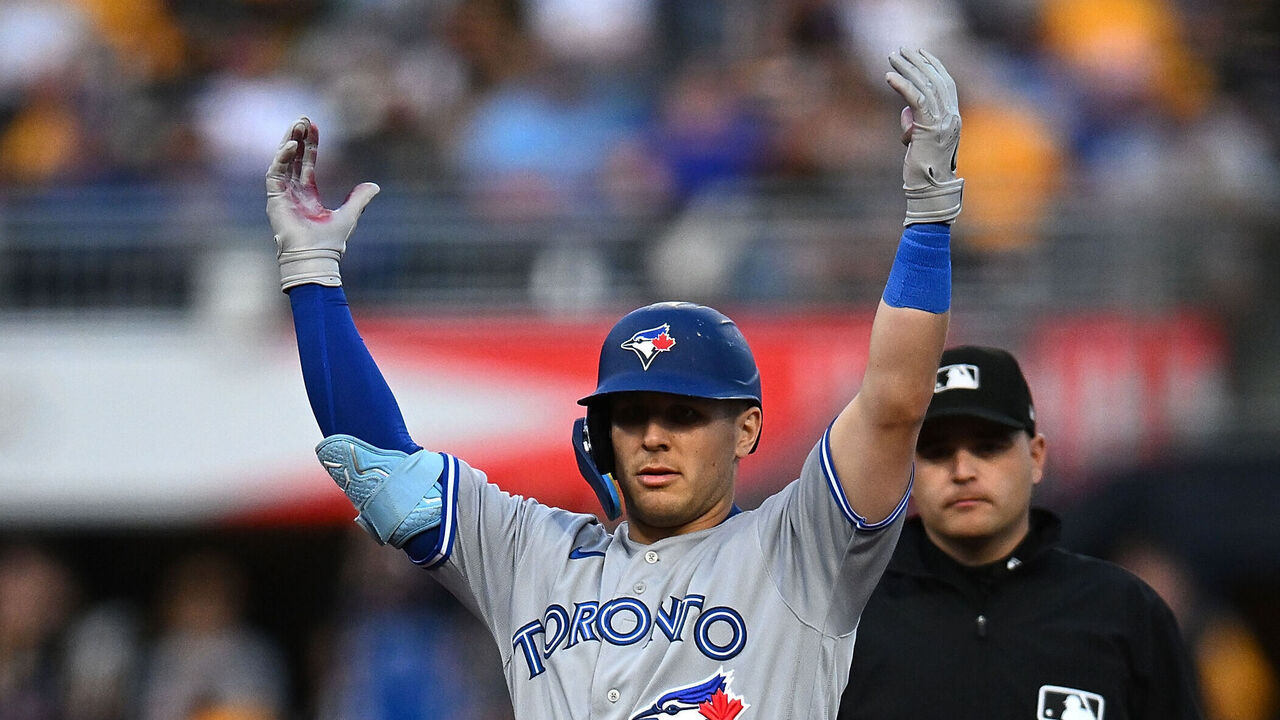Don't blame fans for the Las Vegas move, plus 8 more MLB items
Leading off ...
The blame is always placed on the fans when MLB owners decide to move their teams.
There have been 11 instances of an MLB franchise's relocation dating back to the 19th century, and the likely forthcoming Oakland A's move to Las Vegas will mark a 12th.
A bill for $380 million in public financing for the proposed $1.5-billion stadium project in Las Vegas made its way through a special session of the Nevada Assembly on Wednesday and received the governor's approval on Thursday.
There are still some details to work out. The A's need to put together $1.1 billion in private financing and it's not clear where the club is in that process. MLB owners also have to approve the move, but it seems extremely unlikely that they or commissioner Rob Manfred will come to the rescue of Oakland, where the A's have played for the last 55 years.
It would also be the first MLB franchise relocation since the Montreal Expos moved to Washington in 2005. And the A's will become the first franchise to move three times: from Philadelphia (1901-54), to Kansas City (1955-67), to Oakland (1968-present), and at some point to Las Vegas.

In every instance of an MLB team's move - all 11 of them, according to published media reports - poor attendance was cited by the club owners as a primary motivation.
That was the case again when Jeremy Aguero, a Las Vegas-based analyst hired by A's owner John Fisher, cited a lack of fan support when speaking at a Nevada legislative hearing in late May.
"Their attendance is abysmal now in Oakland," Aguero said, as reported by the San Francisco Chronicle's John Shea. "I don't think there's any illusion. I don't think we should sugarcoat that in any shape or form. That's exactly why the A's are looking to find a new home."
Most neutral observers of the long-running situation in Oakland would say the dismal state of the Oakland Coliseum had a lot to do with driving down attendance. The extended flirtation with Las Vegas pushed attendance even lower.
Blaming the fans made their reverse boycott during Tuesday's game so moving. On the eve of Nevada's big votes Wednesday, A's fans wore kelly green T-shirts bearing one simple word: "Sell." Nearly 28,000 showed up at arguably the majors' least inviting ballpark, which had been averaging about 9,000 fans per game this season.
"I mean, it was great. It is great to see what is this year almost an average Major League Baseball crowd in the facility for one night. That's a great thing," Manfred said dryly on Thursday.
Notwithstanding Manfred's snark, Tuesday night was a small act of defiance, and it struck people more deeply than some might have expected.
The silent protest followed by an insanely loud “Sell the team!” chant was one of the strangest, most powerful moments I’ve ever seen at a game. pic.twitter.com/3yc97WLoZX
— Owen Poindexter (@owenpoindexter) June 14, 2023
It was a reminder of what had been accomplished in Oakland and how the fans had embraced it: the three straight World Series victories from 1972-74; three more trips from 1988-90 with a title in 1989; the "Moneyball" A's that began changing the game. The ringing cowbells and intermittent horns. It was a reminder of what could have been had the Howard Terminal project come to fruition and what could be elsewhere the next time a club owner doesn't get the sweetheart stadium deal they're seeking.
Some asked, "Why give Fisher more revenue?" with those 28,000 tickets Wednesday.
To show that this wasn't because of the fans or the East Bay. The fans have always been there. Oakland ranked second in attendance in the American League in 1989 and 1990, drawing nearly three million fans in 1990. During the Moneyball A's run, they pushed into the top half of the league in attendance despite a facility that was neglected and further impaired by the presence of Mount Davis, while the rest of the league largely had moved into new facilities in the late 1990s and early 2000s.

The truth is, of course, the bottom line is about the product, not the fans. The product is what gets people to show up. Three MLB franchises eventually returned to cities that club owners once fled: Washington (twice), Milwaukee, and Kansas City.
The San Francisco area is home to nearly eight million people, and the East Bay is home to some 2.8 million. While labeled a small market, it didn't have to be.
When the A's product was good, people came.

The main finger-pointing ought to be directed at Fisher, who was going to be wealthy with or without a new stadium in Las Vegas. He was born into wealth; his parents were the founders of the Gap clothing chain. He's worth an estimated $2.2 billion.
There's also the local Oakland government to question. A deal to build a new park at the Howard Terminal site could never come to fruition, ending a 20-year campaign by the A's to find a new stadium site in the region. Oakland is now on the cusp of losing its third pro sports team in four years (although the NBA's Golden State Warriors only moved across the Bay to San Francisco).
While a number of studies show that investing in stadiums is often a poor use of public resources, those studies don't often account for the people losing their jobs or the ancillary businesses affected. There's also the emotional toll of losing a team: pro sports is an important leisure activity for many. While, ideally, there would be zero public dollars committed to new stadiums, that's not the reality.
In the end, this isn't the fault of Oakland's fans. They were given every reason not to attend in recent years, especially this season, but they showed up Tuesday. They never went away.
No. 2: The big winners in the A's move
The real winners here? The San Francisco Giants. Assuming MLB approves the move, the Giants will have the northern California market all to themselves. There are 15 million northern Californians. The Giants, already operating as a large-market club, might inch closer to Yankees or Dodgers status over time. The move creates another uber-market club, potentially.
It's not clear if Las Vegas will be a great baseball home. The Las Vegas Raiders ranked 31st in NFL attendance last year, and NFL clubs only have to worry about eight or nine regular-season home dates. The Vegas Golden Knights ranked 12th in the NHL in attendance but filled T-Mobile Arena to a league-leading 103% capacity during the regular season. It's not how many tickets you sell but how much you can charge for them.
No. 3: The Orioles aren't going anywhere for awhile
If you had any worries about Gunnar Henderson's slow start, those have been put to rest. Henderson's recent hot stretch improved his wRC+ on the season to 126.
He's just one of a number of highly regarded young position players who have arrived or are soon to arrive in Baltimore. The Orioles have the second-best record in the AL, five games back of the Rays.

As colleague Brandon Wile noted, they also have zero dollars of payroll committed beyond next season and have the most prospects in Baseball America's top 100 update (nine).
That's a problem for the rest of the AL East, especially for a club like the Blue Jays, who were expecting to be enjoying a peak contention window but may have already been passed by Baltimore. Toronto is only 1-5 against the Orioles this season.
No. 4: But the Orioles still need some help
The one player development hiccup for the Orioles this year is that Grayson Rodriguez didn't immediately make the leap to the front of the rotation as they hoped. The most glaring hole for the team is it doesn't have a dominant starting pitcher. Very rarely do teams navigate through October without them. The Orioles ought to be aggressive at the deadline, even if they might seem to be overpaying.
The problem, though, might be the market they face. There aren't a lot of teams with impact starting pitchers to trade, though the Guardians and Marlins stand out as potential candidates.

No. 5: The trade deadline is more complicated
One unintended consequence of the expanded playoff field is that there are fewer obvious sellers at the deadline.
Only seven teams have a playoff probability of less than 10% at the moment, according to FanGraphs' calculations. And a number of them (Royals, A's, Nationals) have barren MLB rosters.
No. 6: A surprising potential buyer and seller
The Cardinals fell to 15 games under .500 after being swept by San Francisco on Wednesday. It was the first time they'd been 15 games under .500 since Sept. 23, 1997.
Cardinals third baseman Nolan Arenado said afterward: "I don't know if you'd call it a stretch anymore. It's just bad baseball."
Arenado: "I don't know if you'd call it a stretch anymore. It's just bad baseball. We have been playing bad baseball for awhile now. Do I think we can play better baseball with the players we have in here? Sure. But that remains to be seen." #STLCards pic.twitter.com/9vnuTTXFX8
— Bally Sports Midwest (@BallySportsMW) June 14, 2023
The Cardinals might soon have to come to grips with their failure of a season. Not many teams would hang onto a 35-year-old first baseman who only has one more year on his deal. But Paul Goldschmidt has a full no-trade clause. Moreover, can the Cardinals accept where they are in the standings (and an NL Central with more emerging teams)?
Another issue with the Cardinals as sellers is they don't have impact pitching to trade, and they certainly don't want to trade their young position players. They're in a tough spot.
If the Cardinals are a surprising potential seller, how about a surprising potential buyer? The Reds.
The lineup is one of the more exciting in baseball with the additions of elite prospects Elly De La Cruz and Matt McLain. If they get lefty pitcher Nick Lodolo back in early August - he's making progress healing from a stress reaction in his ankle - and potentially add another starting pitching option behind Hunter Greene and a setup arm in the bullpen, they'd suddenly be a team not many would want to face.
No. 7: A good problem to have
For the Reds, it's having too many shortstops.
They currently have four in their organization who are ranked in the top 100 lists. With McLain playing an excellent shortstop, one wonders if De La Cruz's 80-grade speed and throwing arm would make more impact in center field. Speed is most often utilized in center, a position that features the highest average sprint speed (28.6 feet per second). Behind them are Noelvi Marte at Double-A and Edwin Arroyo at High-A.
No. 8: Catcher weirdness
Cleveland's reluctance to call upon catching prospect Bo Naylor is perplexing. Mike Zunino isn't contributing many competitive at-bats or making competitive throws, while Naylor is crushing Triple-A pitching. In a poor but tight AL Central, Naylor could be a difference-maker.
In Arizona, Gabriel Moreno is excellent in controlling the running game (1.9 second pop time) and is nearly a .300 hitter in his young career. But veteran Carson Kelly started three straight games after returning from the injury list. (Kelly allowed four steals in his first three innings, as many as Moreno had allowed in his previous 23 games). Maybe Moreno is just getting a breather, with manager Torey Lovullo citing some fatigue.

Add these to the Willson Contreras situation earlier this year in St. Louis, and teams and their managers are making some curious decisions behind the plate.
No. 9: Turnarounds?
Speaking of Moreno, the man the Blue Jays acquired for him, Daulton Varsho, is beginning to turn things around.
Over the last two weeks, he's 20th in the majors with a 171 wRC+, along with a .302 average and 19.6% strikeout rate. He's begun to close the hole he's had against elevated fastballs. Overall on the season, his performance looks a lot like that of what he did last year en route to a five-WAR season in Arizona.

Spencer Torkelson, the No. 1 overall pick in the 2020 draft, has been a disappointment to date in his first two seasons in Detroit, but he's beginning to show some promise.
He's cut his strikeout rate, raised his walk rate, and is making above-average contact in the zone.
His exit velocities are nearing the elite, but his batted-ball distribution hasn't been ideal. Too many infield pop-ups and too many low-liner singles. But he homered in back-to-back games this week, including a 436-foot shot against Atlanta ace Spencer Strider.
Spencer Torkelson wasting no time today 🚨😤
— FOX Sports: MLB (@MLBONFOX) June 14, 2023
436 feet off of Spencer Strider!
(via @tigers)pic.twitter.com/ZWS4E3qDcX
Maybe it's starting to click. It was for promising Tigers outfielder Riley Greene before his injury.
Stat of the week
94.9 | The average fastball velocity of the Tulsa Drillers, the Double-A affiliate of the Dodgers. The hardest-throwing team in professional baseball isn't a major-league team.
If we needed more evidence of the advancements in player development and how talented young players are, this is it.
He said it
"There's nothing to address at some point - you just get the job done. We've addressed the club enough." - Cardinals manager Oli Marmol after the sweep to the Giants. Marmol sounds like a man out of answers and perhaps on the hot seat.
You don't see that everyday
There haven't been many pairs of brothers to play in the majors, let alone share such lighthearted moments in close proximity on the field. I think we can tell who's the younger brother amongst the Lowes.
Josh Lowe se embasó y en primera molestó a Nathaniel Lowe, su hermano 🤣. pic.twitter.com/qKAEAjqPR0
— ESPN Béisbol ⚾️ (@ESPN_Beisbol) June 11, 2023
Starting Lineup is a bi-weekly collection of reporting, observations, and insights from the Major League Baseball beat.
Travis Sawchik is theScore's senior baseball writer.